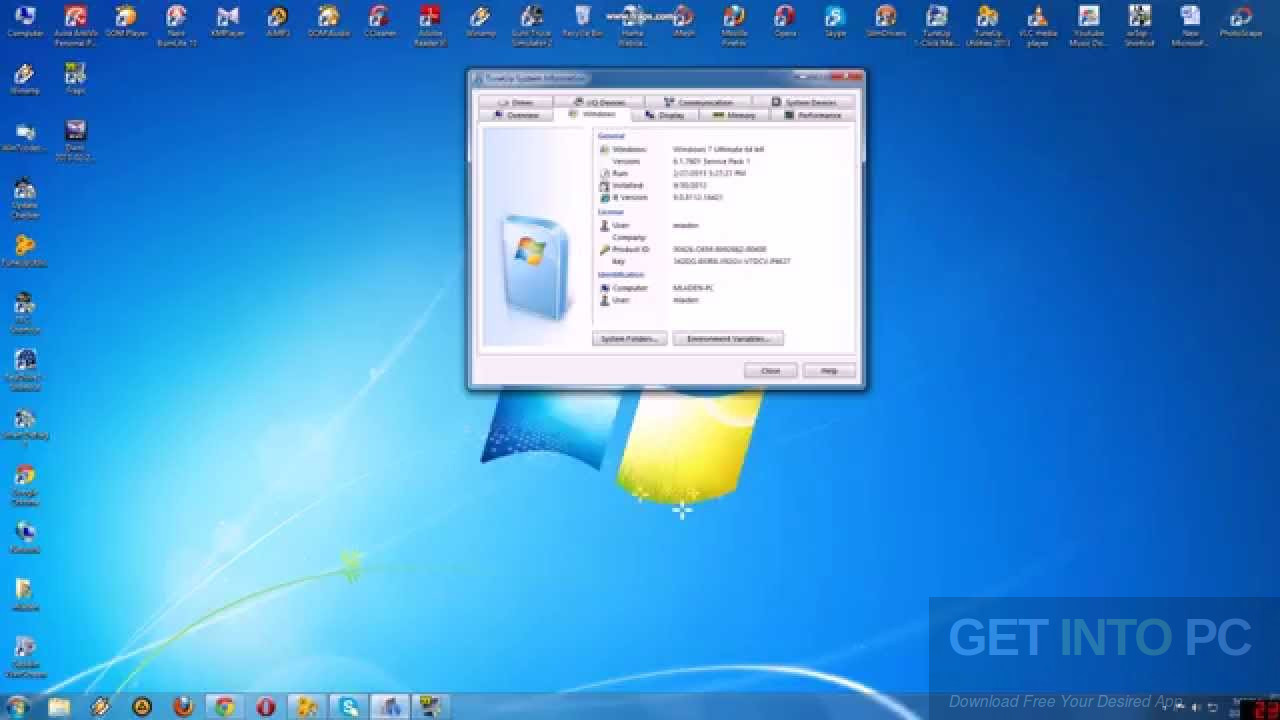Keep the default and click 'Next' button. Choose 'Installer disc image file'. This type matches the iso file you download. Click 'Browse' to locate your Windows 7 iso file. Then, click 'Next'. Select the version of Windows to install. The version depends on the iso file you download. . If you have a Windows 7 DVD, instead download the correct Service Pack 1 file and install this immediately after installing Windows 7. Note you will need the full.iso file if planning on switching from 32 bit Windows 7 to 64 bit Windows 7. Click on Storage in the left pane of the Win7 Settings window and then click on Empty and click on the DVD symbol to choose Virtual Optical Disk File. Add the Windows 7 ISO file to the virtual pc. Installing Windows 7 on VirtualBox is now ready. 2- Declare Windows 7 virtual machine. First, you need to open the VirtualBox, select New to create a new virtual machine. Choose the number of RAMs to be provided to the virtual machine. Next, create a virtual hard disk for your virtual machine. Select the position where your virtual disk file will be created and designate the size of your.

VMware also provides access to ISO images that you can use to deploy Windows Server machines.

Windows 7 Iso For Vmware Fusion
VMware provides a curated Microsoft software repository with the following ISOs for your use:- Windows Server 2019 Datacenter
- Windows Server 2019 Language Pack
- Windows Server 2016 Datacenter
- Windows Server Datacenter (provides Microsoft Semi-Annual Channel Release)
- SQL Server 2019 Enterprise. Use this ISO if you need to add features to the SQL Server instance.
Windows 7 Iso For Vmware
- Subscribe to the VMware-curated Microsoft software repository by creating a subscribed Content Library using the following URL: https://vmc-microsoft-templates.s3-us-west-2.amazonaws.com/Images/lib.jsonFor more information on creating Content Libraries, see https://docs.vmware.com/en/VMware-vSphere/7.0/com.vmware.vsphere.vm_admin.doc/GUID-2A0F1C13-7336-45CE-B211-610D39A6E1F4.html.
- Create the VM. For more information on creating VMs, see https://docs.vmware.com/en/VMware-vSphere/7.0/com.vmware.vsphere.vm_admin.doc/GUID-AE8AFBF1-75D1-4172-988C-378C35C9FAF2.html.
- Install the guest operating system and any other software from the ISO images. For more information on installing software from ISO images, see https://docs.vmware.com/en/VMware-vSphere/7.0/com.vmware.vsphere.vm_admin.doc/GUID-55FC02D4-F5B3-4357-BB6B-78240B7F16BA.html.
- Install VMware Tools on the VM.
- Copy the activation script to the VM.An ISO image containing the activation script is located in the subscribed Content Library.
- In the vSphere Client, navigate to the subscribed Content Library and click Other Types.
- Attach the VM's CD/DVD drive to the Windows_Activation_Script ISO in the Content Library.For more information on connecting a Content Library ISO file to a VM, see https://docs.vmware.com/en/VMware-vSphere/7.0/com.vmware.vsphere.vm_admin.doc/GUID-BE1C18D2-8FF0-4F41-AA35-A4BA71D62EB4.html.
- Copy the Activation.ps1 script file to the VM's local disk.
- Make any necessary modifications to the VM, such as adding vCPUs, adding disks, or changing network settings. For more information on configuring VMs, see https://docs.vmware.com/en/VMware-vSphere/7.0/com.vmware.vsphere.vm_admin.doc/GUID-4AB8C63C-61EA-4202-8158-D9903E04A0ED.html.
- Configure the compute gateway firewall using the VMC Console to allow outbound HTTP and HTTPS access to the internet. This is required for initial activation of the Windows server image. For more information about firewall configuration, see https://docs.vmware.com/en/VMware-Cloud-on-AWS/services/com.vmware.vmc-aws.networking-security/GUID-A5114A98-C885-4244-809B-151068D6A7D7.html.
- Power on the VM.
- Run the activation script.
- In the guest operating system, open a command window and change to the directory where you copied the Activation.ps1 script.
- Type powershell Activation.ps1 and press Enter.
- Configure a Windows Server password to secure the VM according to your corporate security policy.
Windows 7 Iso For Vmware Player
- Update your VM with the latest patches and security updates. Although VMware supplies current versions of Microsoft products, it is your responsibility to apply the latest maintenance updates and security patches to ensure that the products run in a secure environment. Follow your enterprise recommendations on updating any binaries that you import into your SDDC.
- Update firewall rules. The activation and patch update process requires that the VM have internet access. Follow your enterprise guidelines on whether these firewall rules should be modified after activation.